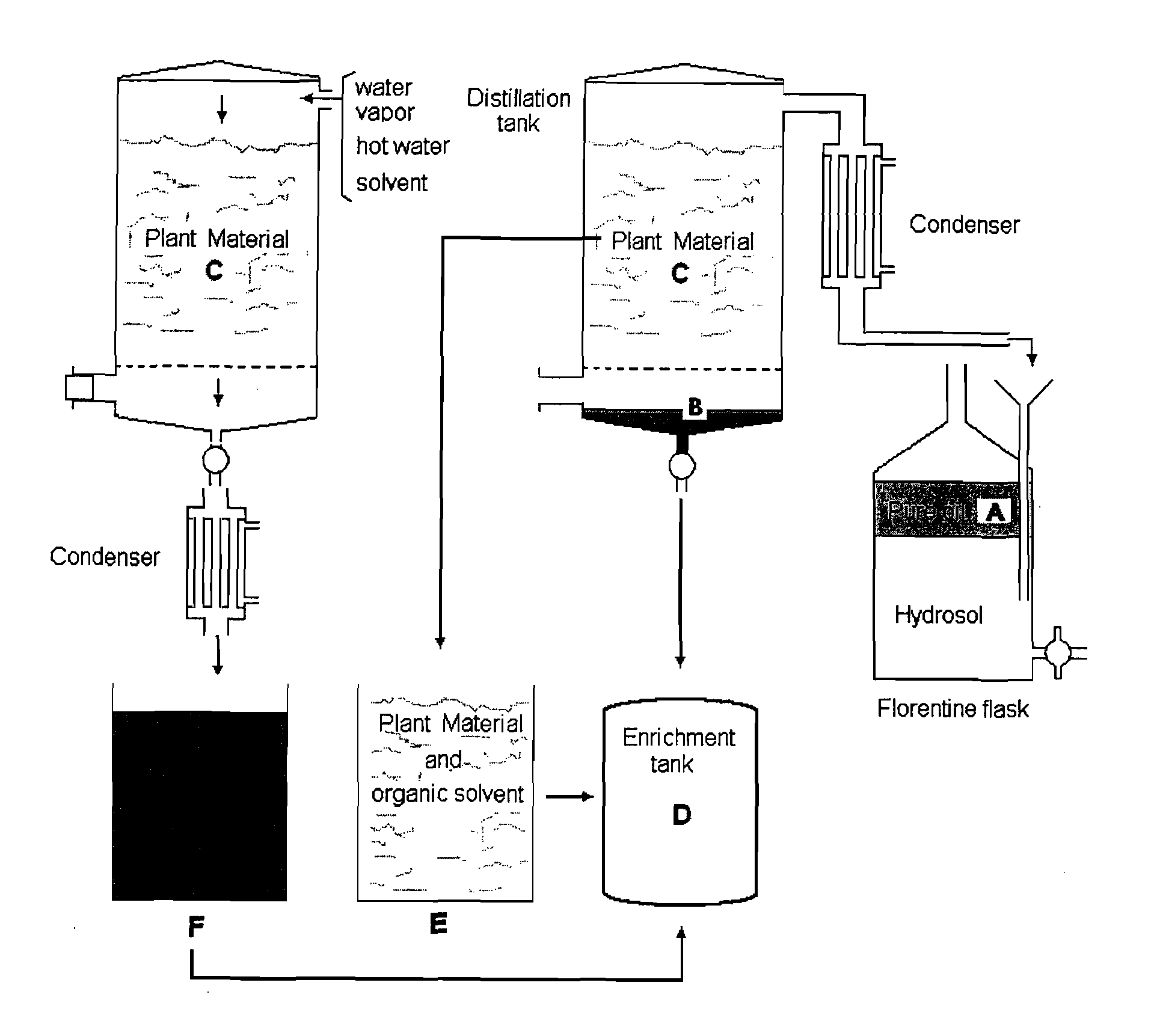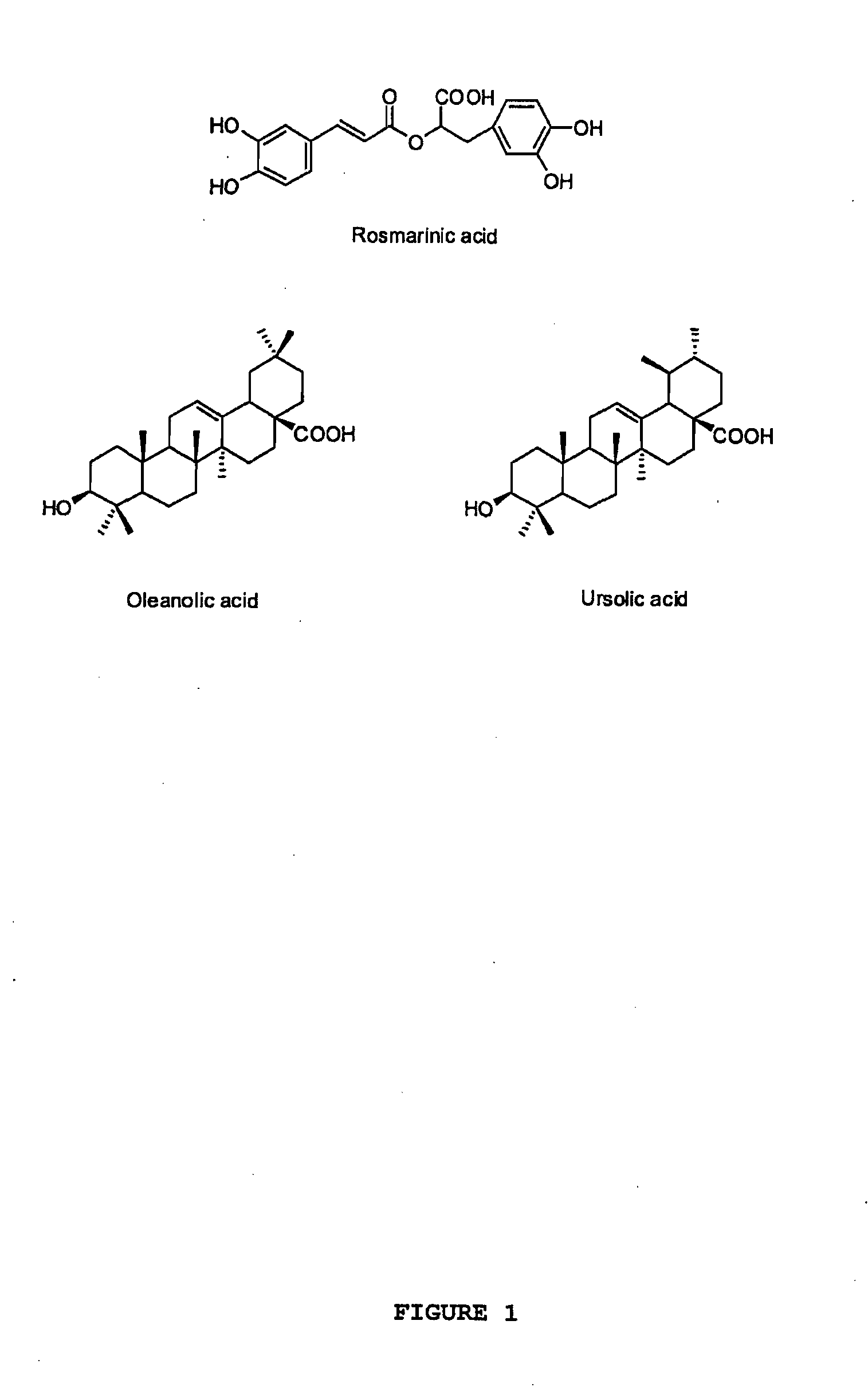Oregano and mint Anti-inflammatory compositions and methods
a technology of oregano and mint, which is applied in the direction of food ingredients as antioxidants, biocides, drug compositions, etc., can solve the problems of myocardial infarction and stroke, rofecoxib was voluntarily removed from the market, and the adverse effects of these drugs have been recognized, so as to facilitate a concentration framework, reduce pain and discomfort, and minimize waste
- Summary
- Abstract
- Description
- Claims
- Application Information
AI Technical Summary
Benefits of technology
Problems solved by technology
Method used
Image
Examples
example 1
Isolation and Identification of Oleanolic Acid and Ursolic Acid from Oregano
[0117]The standard compounds oleanolic acid and ursolic acid were isolated from oregano samples (O. vulgare ssp. hirtum) and used for preparation of calibration standards. The dried oregano leaves (100 g) were extracted three times with ethanol and concentrated to dryness under reduced pressure. The residue was loaded to a silica gel (130-270 mesh) column and eluted by hexane-EtOAc (1:1), EtOAc, EtOAc-acetone (1:1) and acetone in sequence. A total of 16 fractions were collected, and the second fraction containing oleanolic acid and ursolic acid was further subjected to a preparative HPLC separation. The compounds oleanolic acid and ursolic acid were then purified using a Varian C 18 preparative column (250×41.4 mm, 8 μm) eluted with methanol-water (8:2). The structures of the two triterpenoid acids were elucidated by NMR and MS analysis.
example 2
Cell Culture
[0118]RAW 264.7 cells, derived from murine macrophages, were procured from the American Type Culture Collection (Rockville, Md.). The cells were cultured in RPMI-1640 (without phenol red) supplemented with 10% endotoxin-free, heat-inactivated fetal calf serum (GIBCO, Grand Island, N.Y.), 100 units / mL penicillin, and 100 mg / mL streptomycin. When the RAW 264.7 cells reached a density of 2-3×106 cells / mL, they were activated by incubation in the medium containing E. coli LPS (lipopolysaccharide, 100 ng / mL). Various concentrations of test compounds dissolved in DMSO (dimethylsulfoxide) were combined together with LPS. The cells were treated with 0.05% DMSO as vehicle control.
example 3
[0119]The RAW 264.7 cells were treated with various compounds and LPS or LPS only. The supernatants were harvested and the amount of nitrite, an indicator of NO synthesis, was measured using the Griess reaction. Briefly, supernatants (100 μL) were mixed with the same volume of Griess reagent (1% sulphanilamide in 5% phosphoric acid and 0.1% naphthylethylenediamine dihydrochloride in water) in duplicate on 96-well plates. After incubation at room temperature for 10 min, absorbance at 570 nm was measured with the ELISA reader (Thermo Labsystems, Multiskan Ascent, Finland).
PUM
| Property | Measurement | Unit |
|---|---|---|
| Fraction | aaaaa | aaaaa |
| Fraction | aaaaa | aaaaa |
| Fraction | aaaaa | aaaaa |
Abstract
Description
Claims
Application Information
 Login to View More
Login to View More - R&D
- Intellectual Property
- Life Sciences
- Materials
- Tech Scout
- Unparalleled Data Quality
- Higher Quality Content
- 60% Fewer Hallucinations
Browse by: Latest US Patents, China's latest patents, Technical Efficacy Thesaurus, Application Domain, Technology Topic, Popular Technical Reports.
© 2025 PatSnap. All rights reserved.Legal|Privacy policy|Modern Slavery Act Transparency Statement|Sitemap|About US| Contact US: help@patsnap.com



